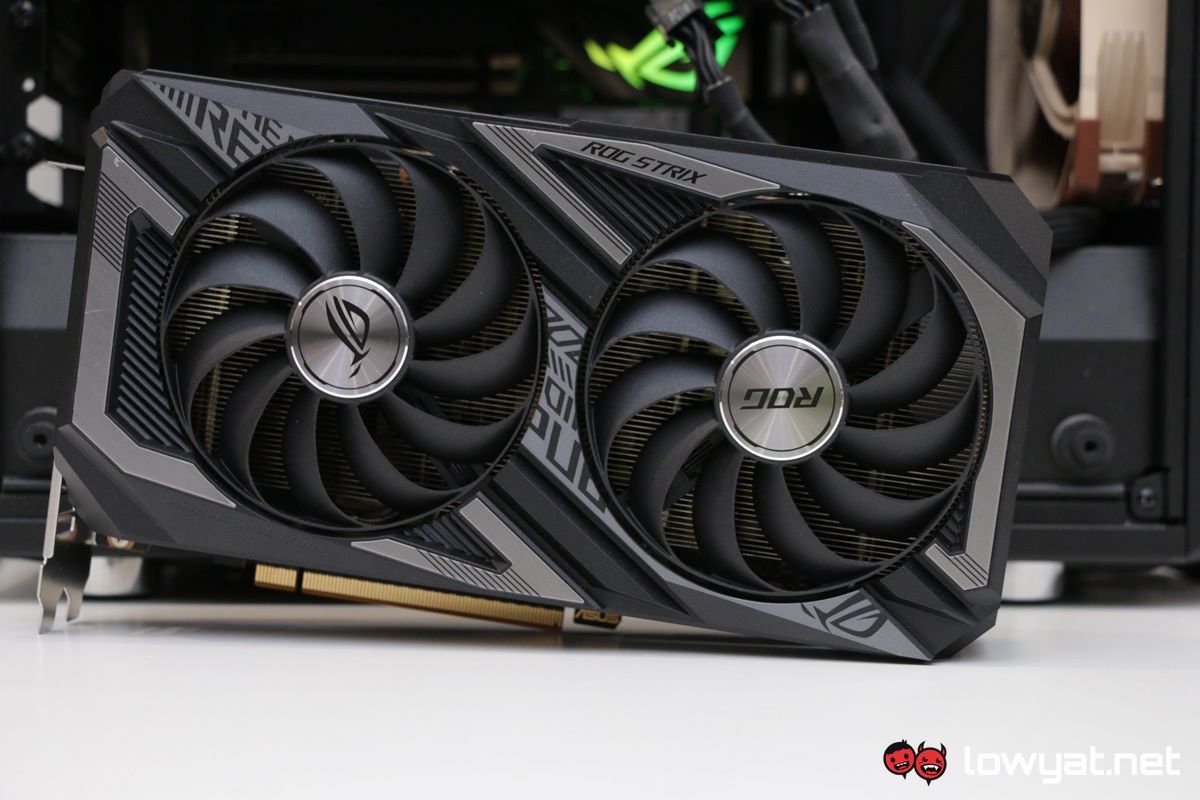AMD’s Radeon RX 6600XT is finally here, thereby giving gamers another entry-level and Full HD gaming alternative, as well as NVIDIA’s GeForce RTX 3060 a run for its money. Not entirely surprising and unlike higher tier GPUs, there is no reference cooler for the 6600XT; AMD has simply left that part in the hands of its AiB partners.
On that note, the 6600XT I have in my hands is an ASUS ROG Strix edition graphics card, complete with a dual-fan configuration. With that, let’s get started.
Specifications
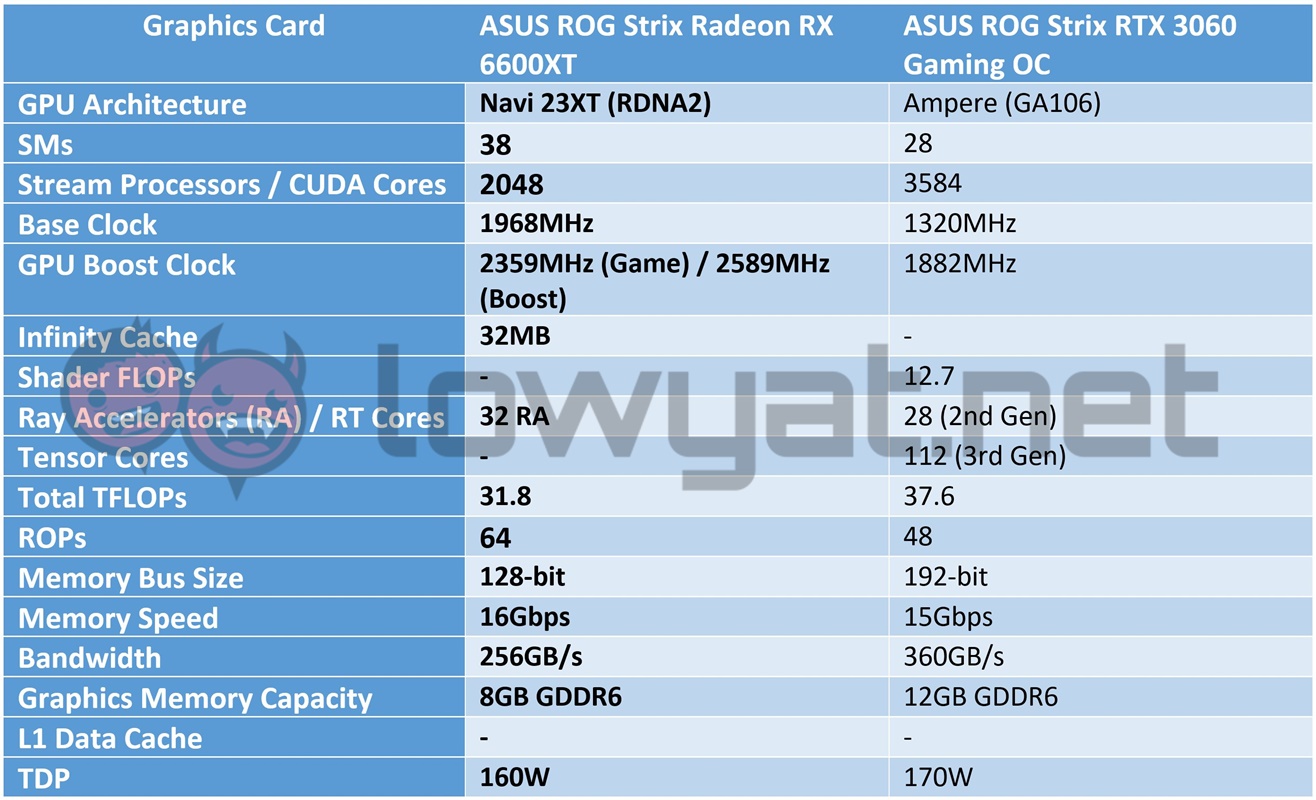
As we have previously reported, the 6600XT is basically powered by what is effectively a watered-down version of AMD’s RDNA2 GPU architecture. In this case, the GPU soldered onto the PCB is the Navi 23 XT, flanked by a 32MB Infinity Cache. Additionally, the card runs on 8GB GDDR6 graphics memory, which is funnelled through a 128-bit memory bus.
In comparison to NVIDIA’s RTX 3060, the 6600XT requires 10W less power to run and regardless of brands and their cooling solutions, these specifications are uniform across the board, save for the slight bump in clockspeeds here and there.
Design
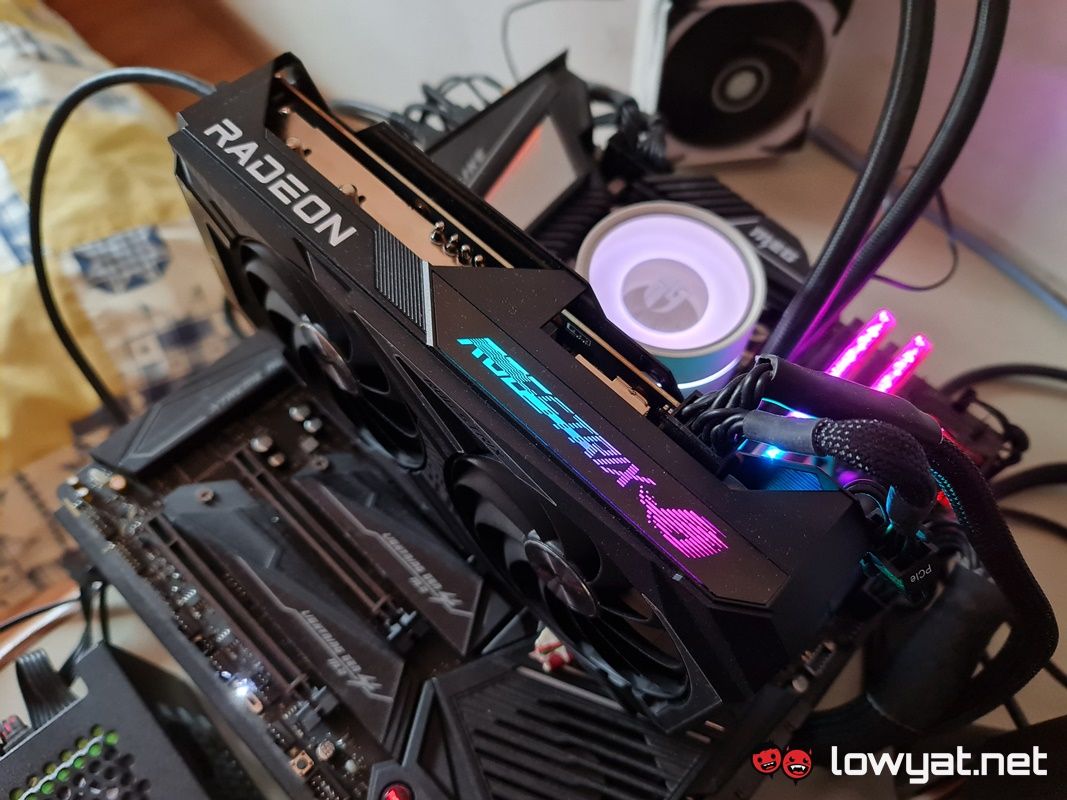
As far as custom-cooling solutions go, ASUS’ ROG Strix aesthetics on this 6600XT is as sleek as other cards under the lineup, complete with all the clean, angular cuts that are warranted by the lineup. Along its spine, the cooler shroud is labeled with the “Radeon” and ROG Strix branding; ensuring that no one can mistake the card as anything but a card that is powered by AMD’s Radeon graphics technology.
Despite its entry-level status, though, ASUS has seen fit to bolt a backplate to the card, adding further to the card’s overall aesthetics but also providing more rigidity to the card, significantly reducing the chance of the PCB ever sagging in the long-run.
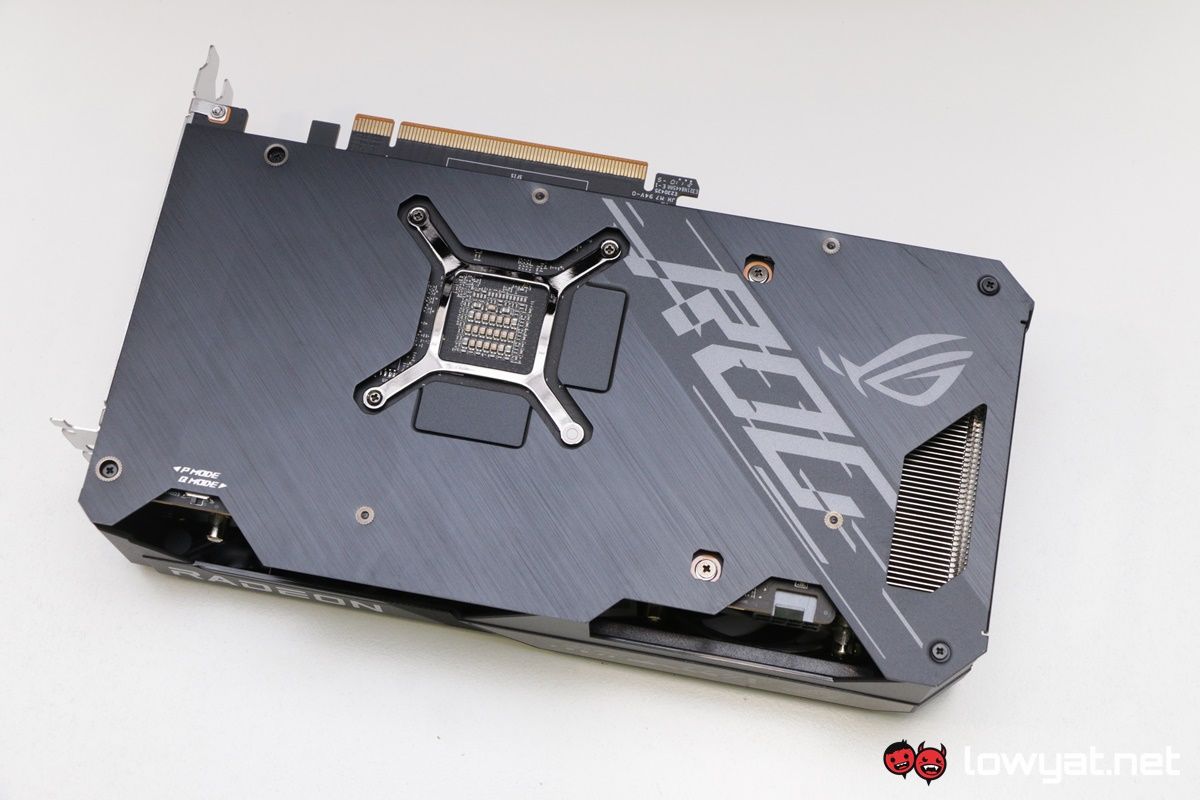
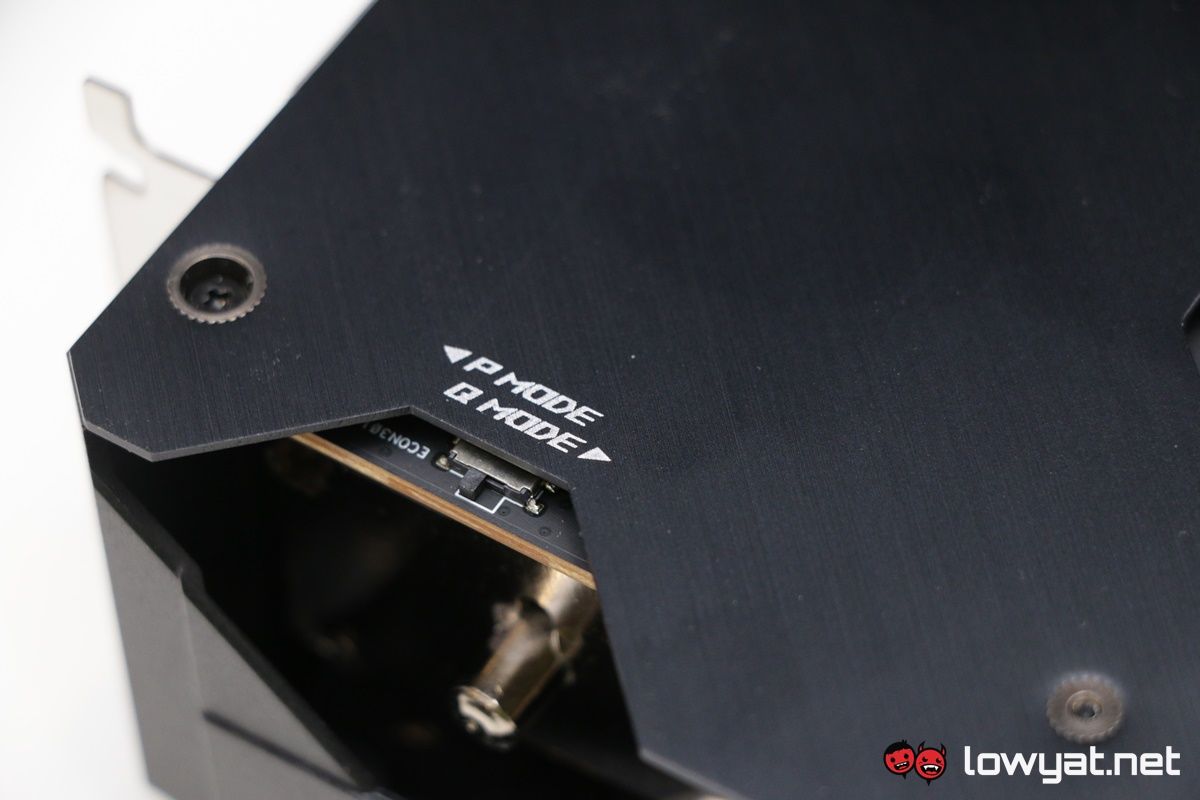
Another feature that comes with this 3rd party variant of the 6600XT is the Mode Switch that ASUS has installed at the base of the card. The feature isn’t new by any measure of the term and its function is as straightforward as it suggests. Users can choose between a Performance Mode or P Mode – this is the default setting of the card out of the box – and a Quiet Mode or Q Mode, that provides a more silent operation, at a small performance cost, of course.
Dissipating the heat from the heatsinks are two of ASUS’ Axial-tech fans that also supports zero RPM technology, and only spin when the card’s temperature exceeds a certain point (usually 55°C).
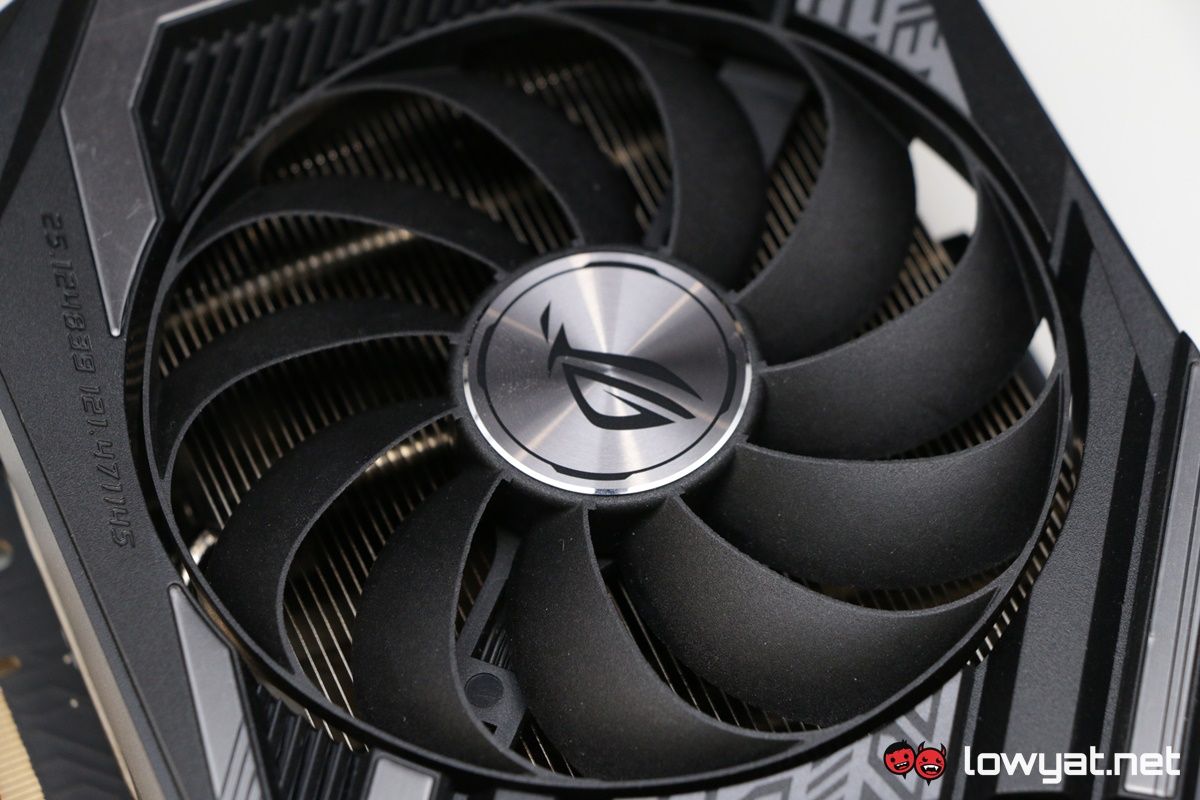
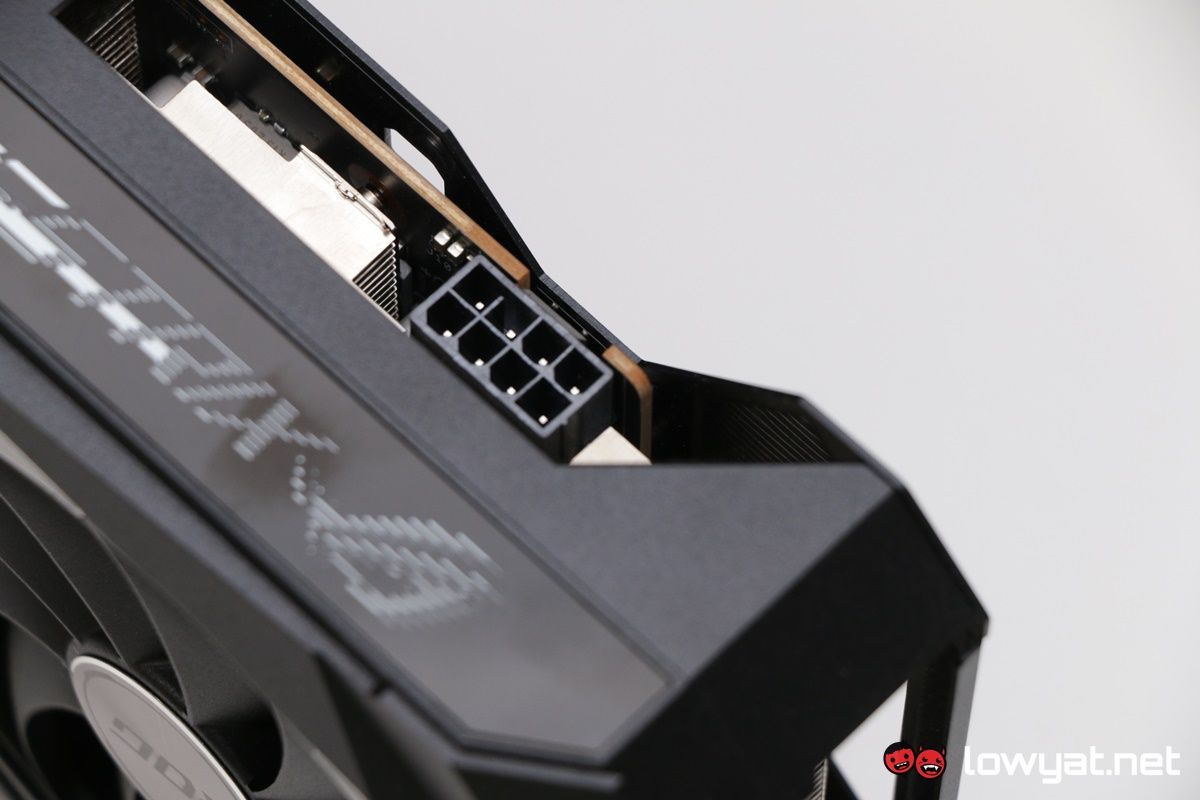
Lastly, the card only requires a single 8-pin PCIe power connector to run, and that includes the RGB strip embedded into the spine.
Testbed
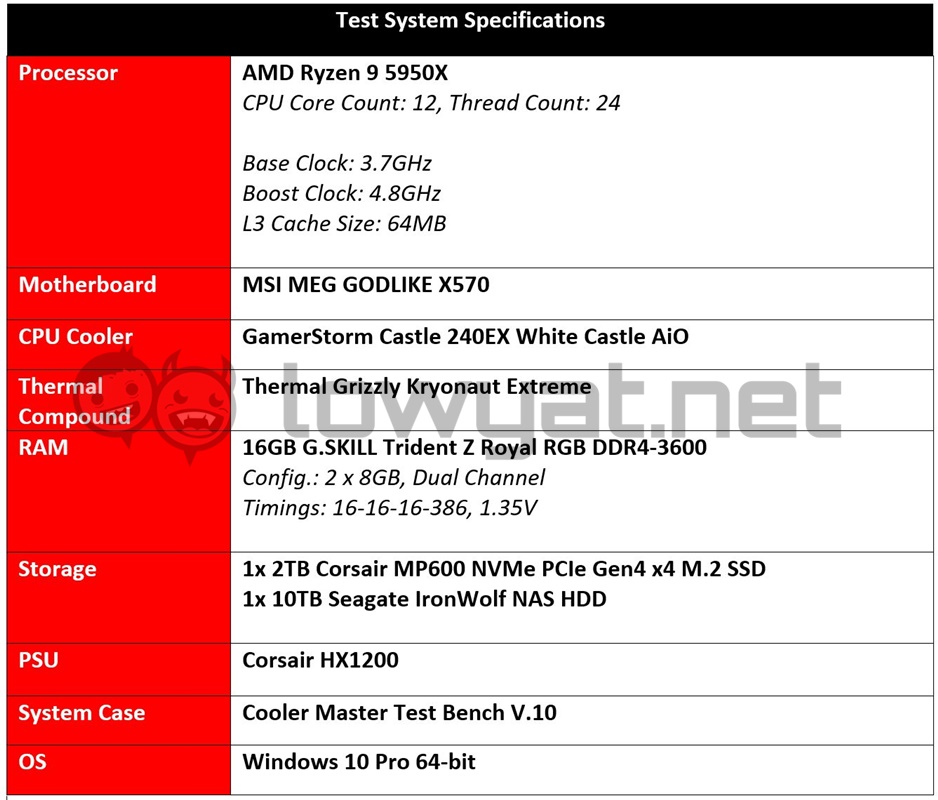
Seeing as the 6600XT is a direct rival to the RTX 3060, I will be comparing its performance with the ROG Strix RTX 3060 Gaming OC that I reviewed earlier this year. In addition, some of the benchmarks listed in the following section also include the 6600XT’s performance with ray-tracing active.
Benchmarks
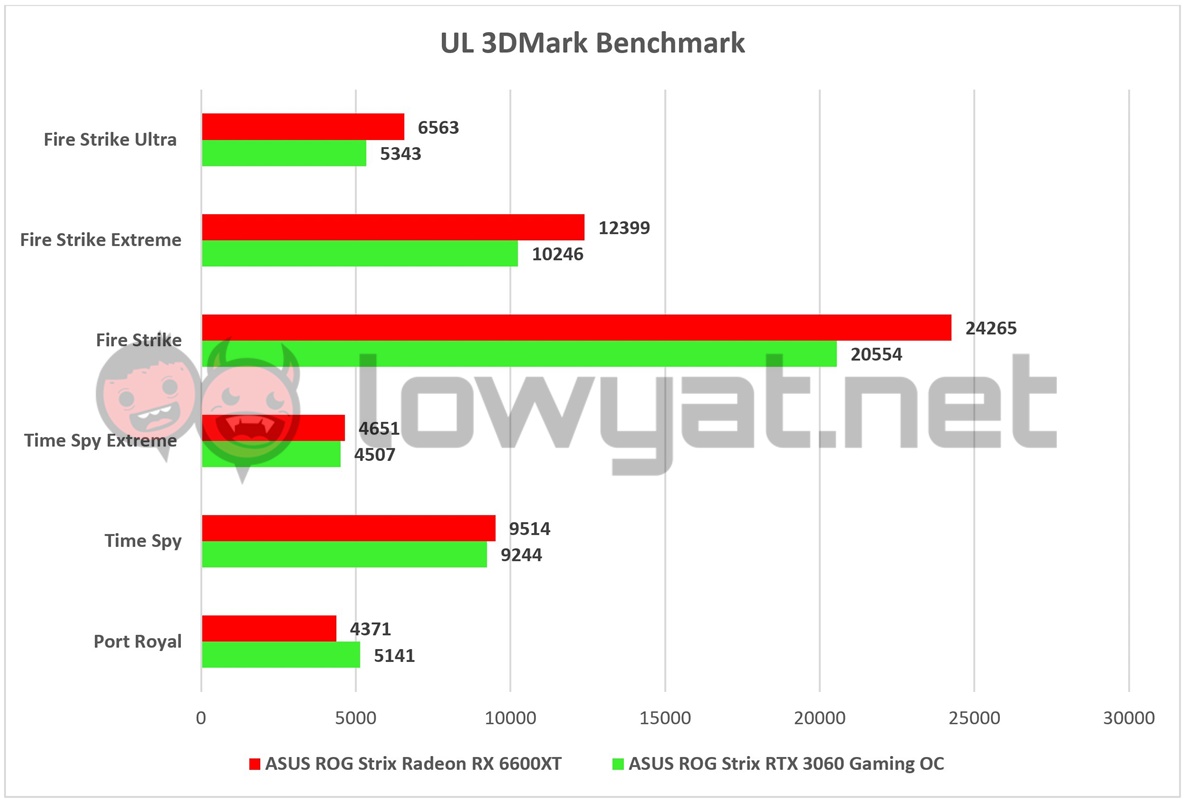
On a synthetic level, the 6600XT clearly follows in the footsteps of the more powerful 6800XT and 6900XT. Performance-wise, the card outperforms the RTX 3060 in all but the Port Royal test in 3DMark. The latter is obviously due to the dedicated RT Cores embedded within the Ampere-powered card.
Likewise, it’s a similar tale with the 6600XT’s performance in Unigine Superposition, although the card did show signs of struggling during the 4K portion of the test.
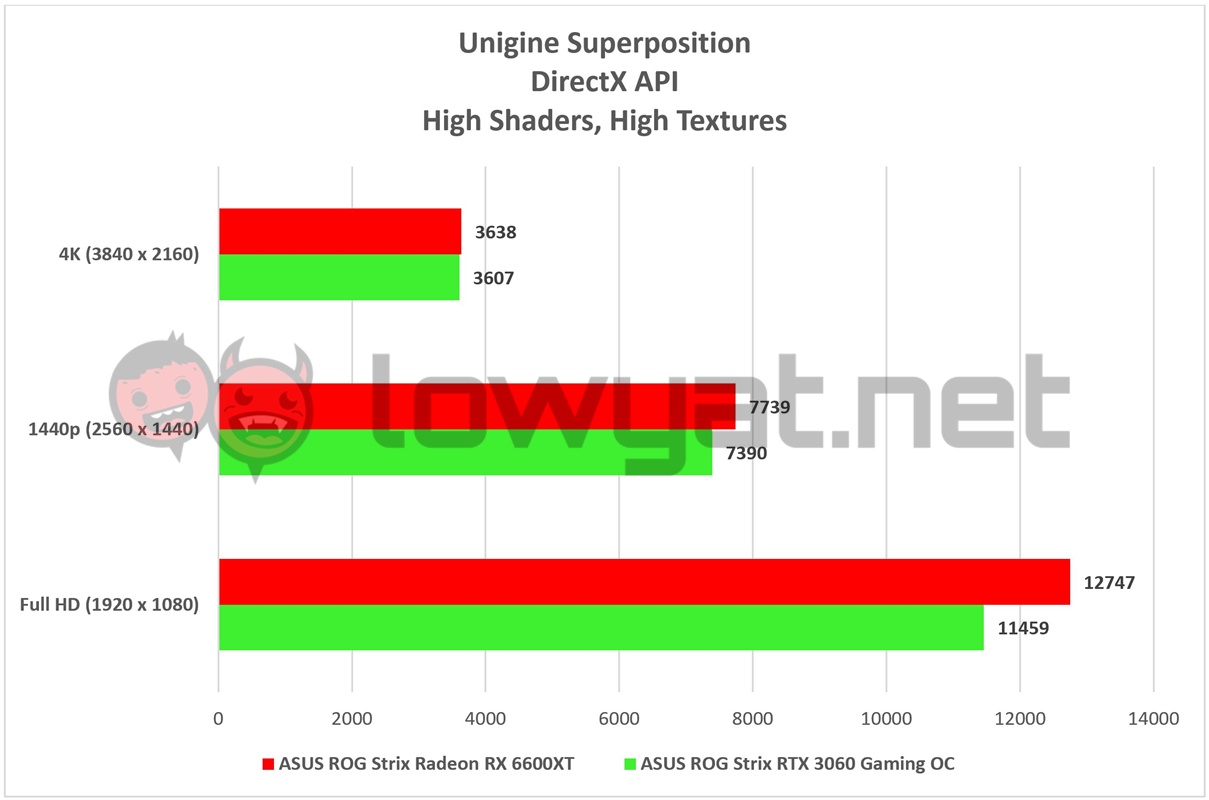
Where the 6600XT’s limitations begin to show is in games that offer the ray-tracing as an extra aesthetic feature. As appealing as the feature is to the eyes, running it without access to an resolution upscaler, such as AMD’s recently launched FidelityFX Super Resolution (FSR), means that its performance in titles like Control takes a very heavy hit with ray-tracing turn on.
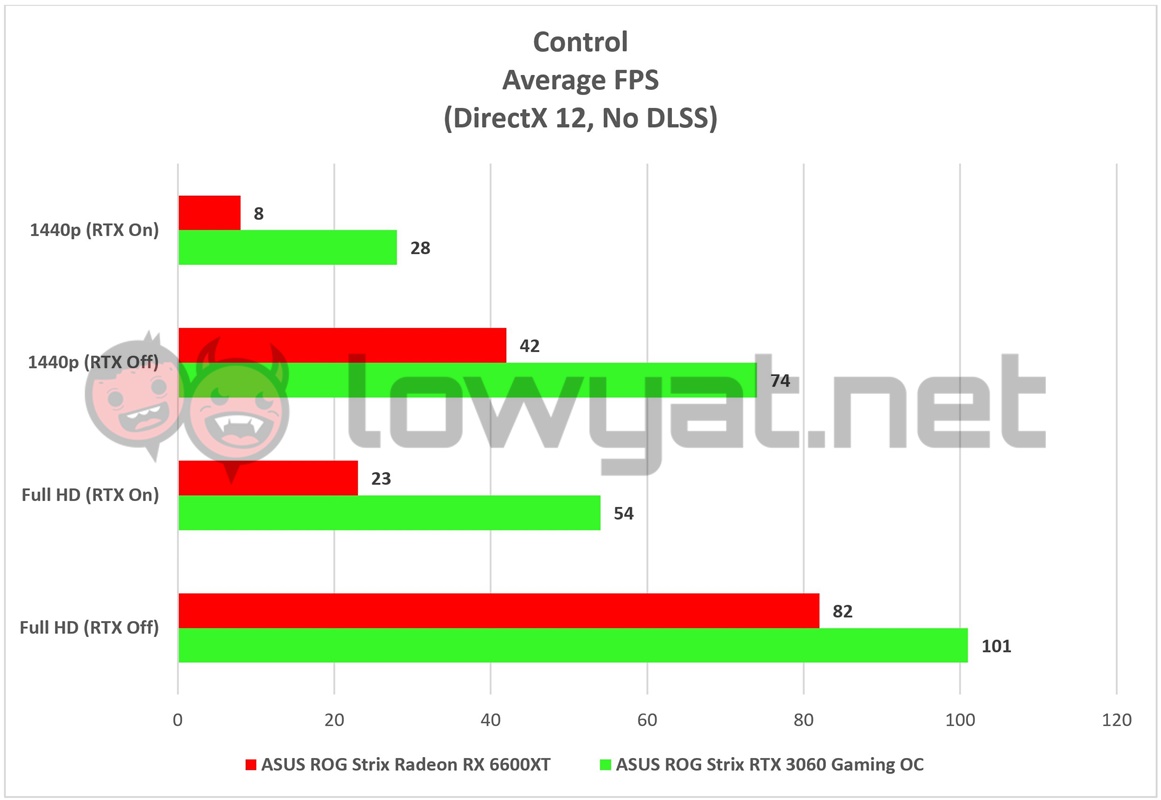
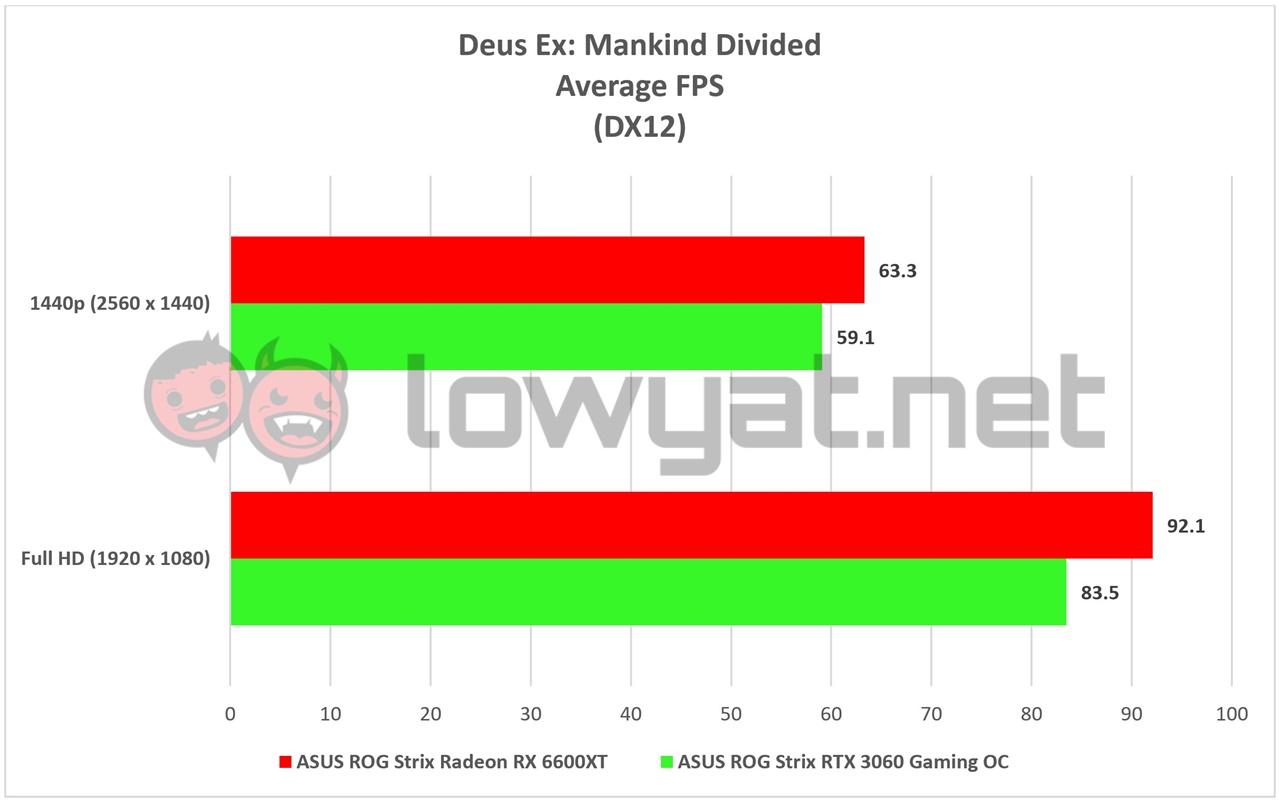
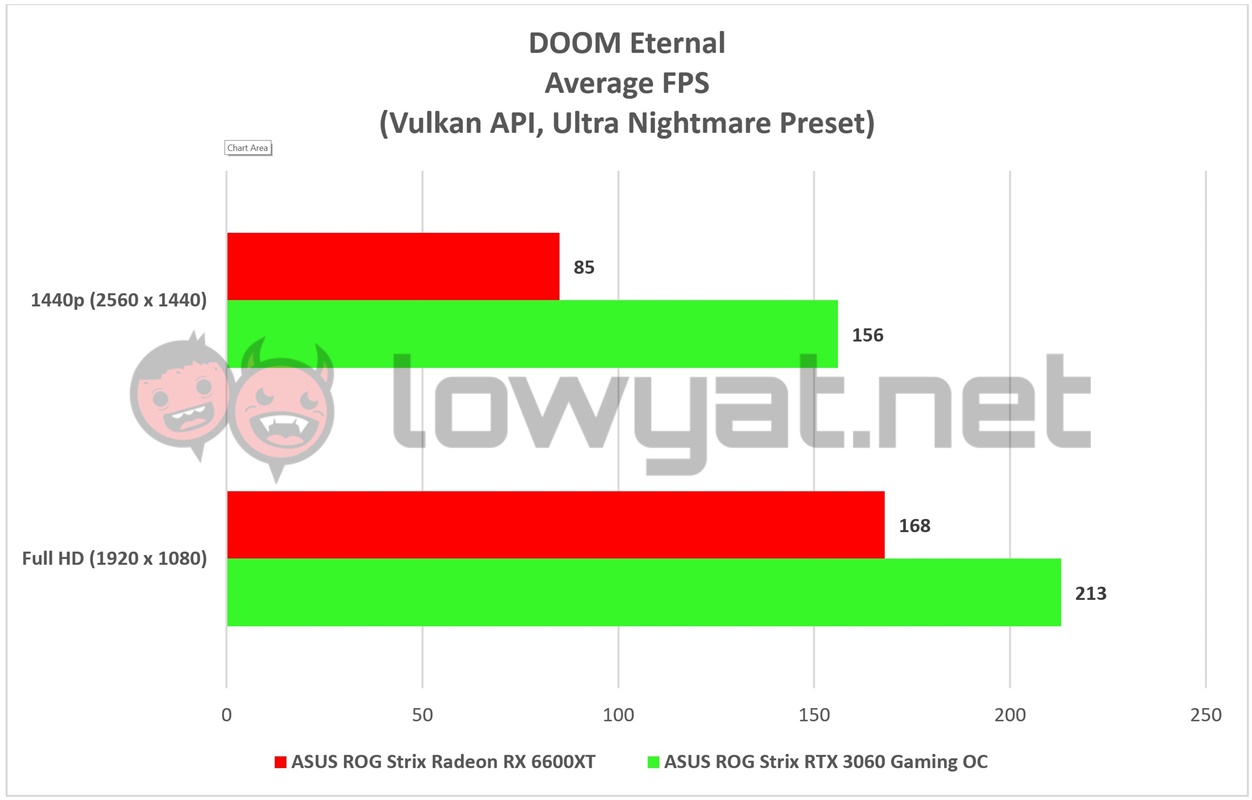
With titles like Shadow of the Tomb Raider, though, the average performance of the 6600XT with ray-tracing turned on is surprisingly acceptable and again, that is without any upscaling involved. Throughout most of the test titles without ray-tracing, however, the 6600XT’s performance is a mixed bag compared to the RTX 3060, but to be fair, its average frame rates are still within acceptable parameters.
Still on the subject of ray-tracing, DOOM Eternal is another title that recently gained access to ray-tracing, along with NVIDIA’s DLSS. When I ran the game on the 6600XT with ray-tracing on, the experience was far less than stellar, with frames running in single digits and therefore, being very unplayable. Pretty-looking, but unplayable nevertheless.
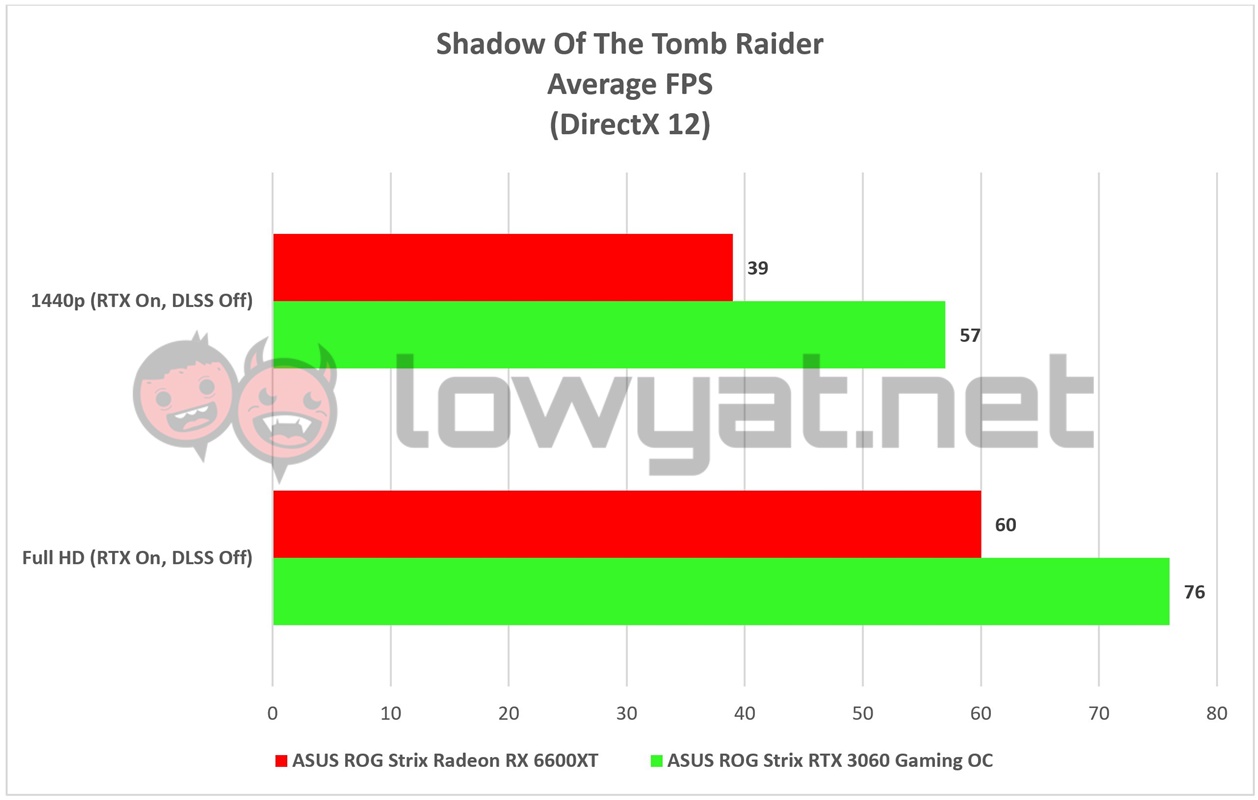
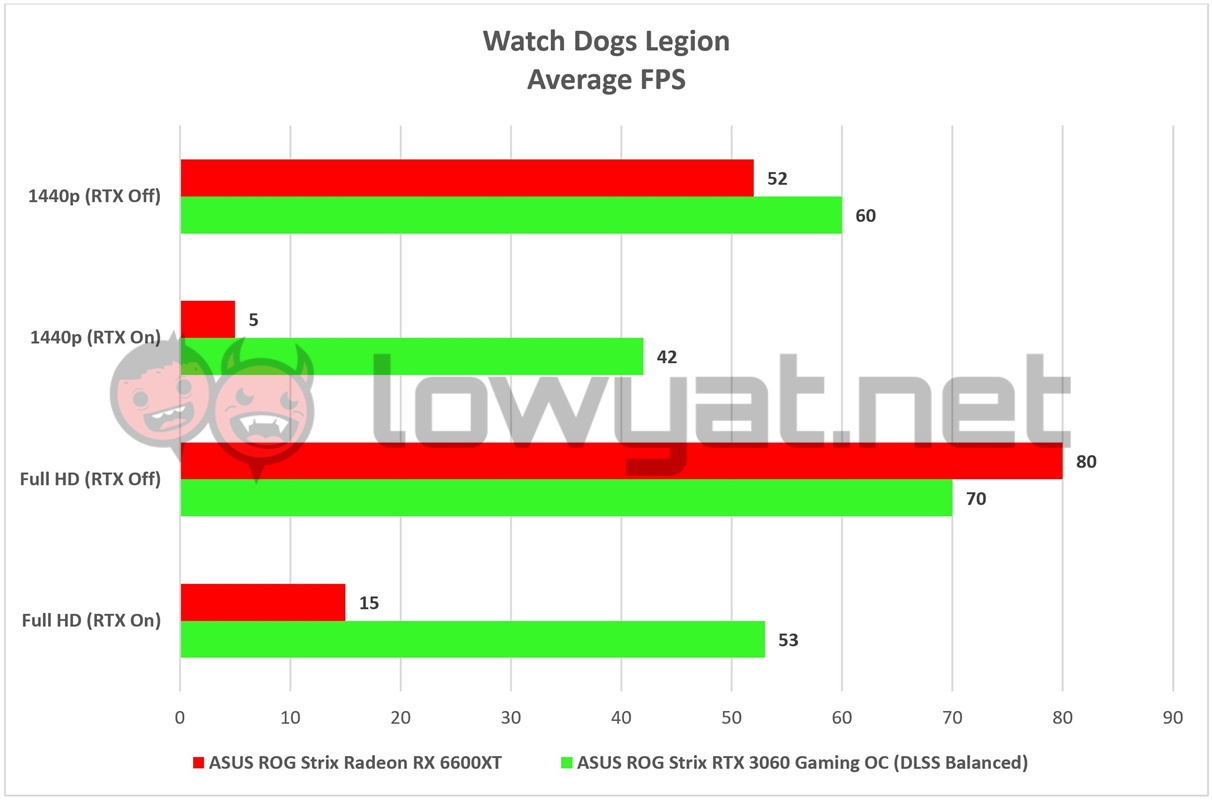
Likewise, it’s the same story for Watch Dog Legions; while the 6600XT has no issue running the game with RTX off, turning it on cripples its performance down to a level that, frankly, just isn’t worth the extra light refractions.
Temperature And Power Consumption
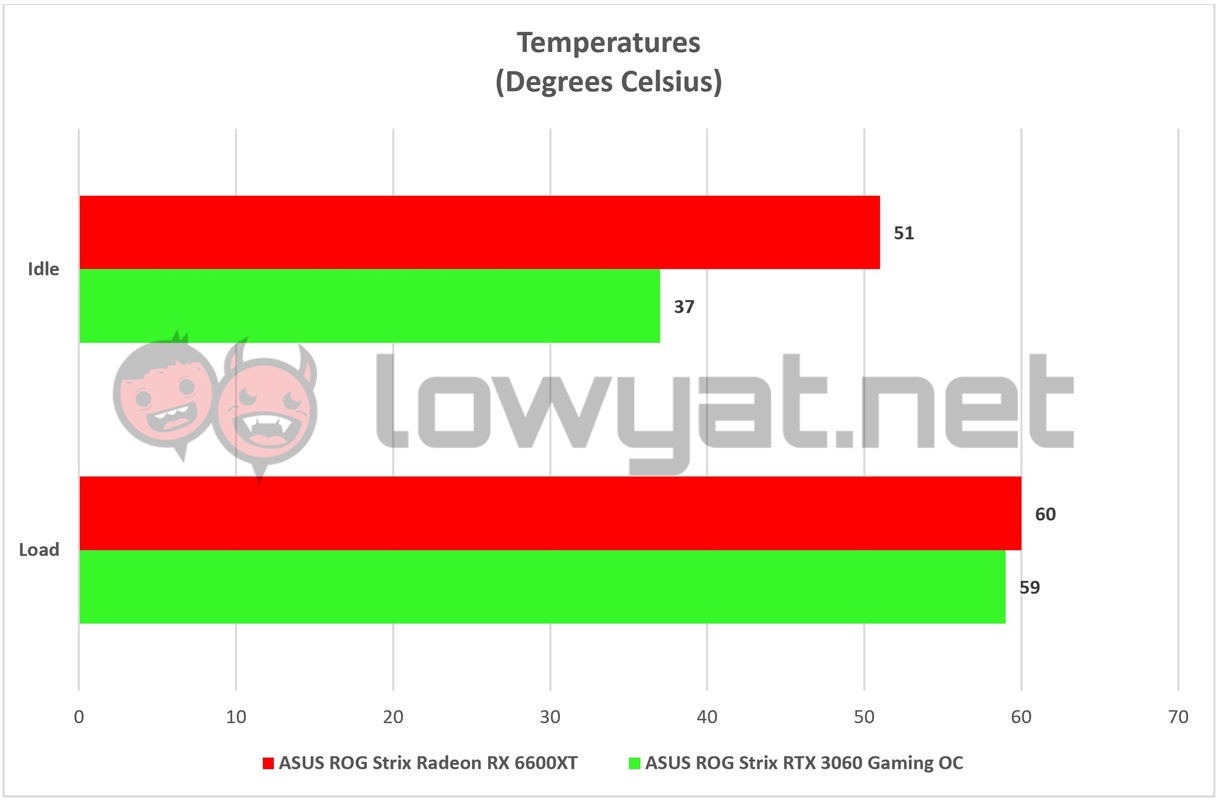
Temperature-wise, ASUS’ ROG Strix cooling solution looks standardised across all its cards. In the case of the 6600XT, the card’s maximum temperature never exceeds the 60°C on full load, but to be clear, that’s with an open test bench with the ambient temperature kept running at 20°C. Interestingly, its average idle temperature always seems stuck at 51°C. Even at that temperature though, the fans still don’t spin, leaving to believe that is by design.A
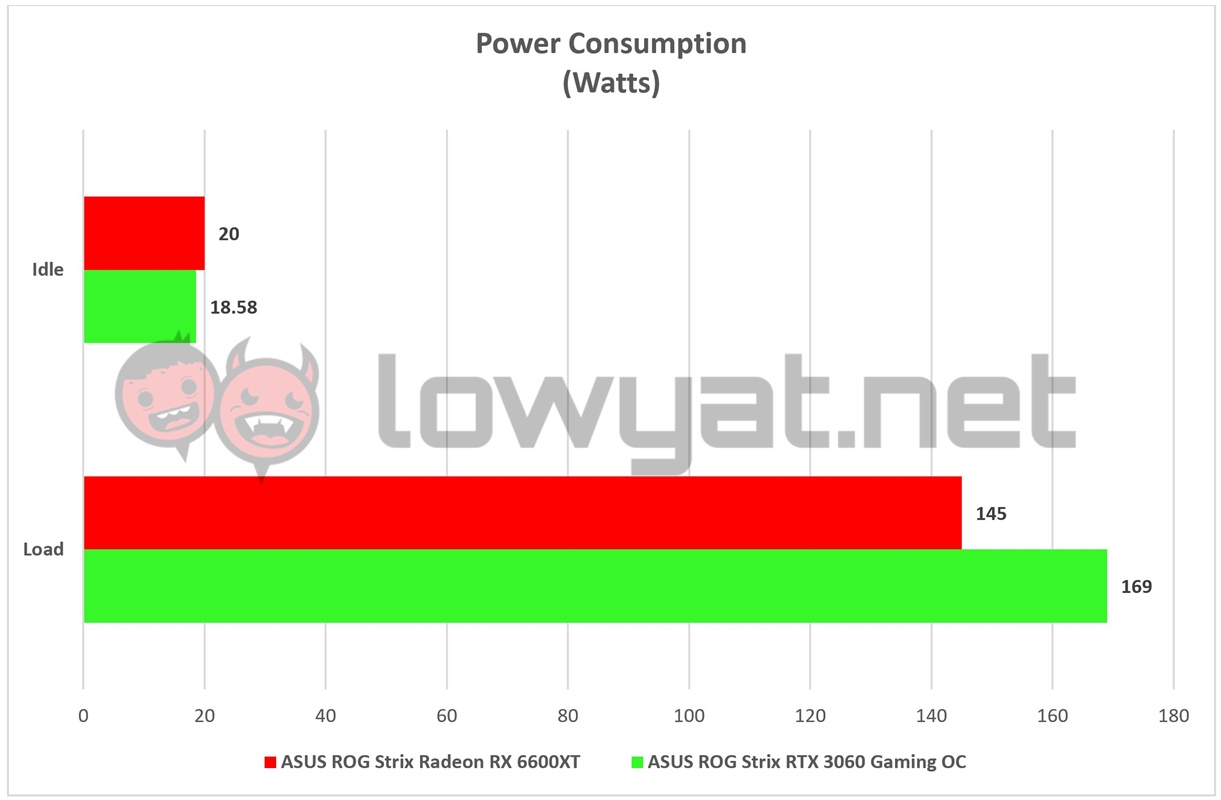
Power consumption is yet another surprising factor. Despite its 160W TDP, the 6600XT maxed out at 145W and never seems to draw any more power, and that is out of the box. For an AMD Radeon GPU, I was certainly expecting it to be higher or at least slightly more than what NVIDIA’s cards usually pull from the wall.
Conclusion
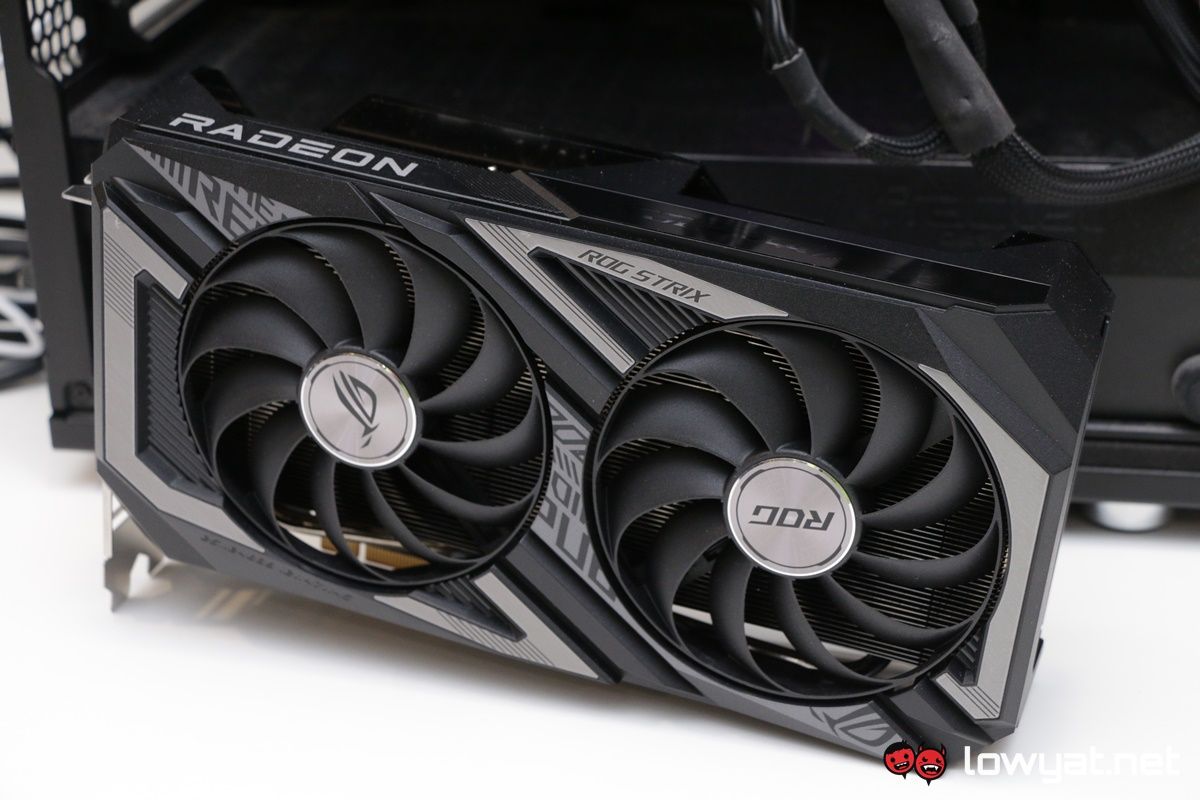
It is clear from its performance that the Radeon RX 6600XT is AMD’s most solid performing entry-level graphics card and that is saying something. Especially if you look back at the company’s history with its entry-level Polaris offerings.
At a starting price of US$379 (~RM1602), this ROG Strix Radeon RX 6600XT is certainly looking and sounding more appealing as an alternative to the RTX 3060, especially if you’re not anal about ray-tracing. That said – and this point is starting to get really old – there is still the subject of the ongoing chip shortage and to that end, it is likely that this GPU could end up selling for double its SRP.
Follow us on Instagram, Facebook, Twitter or Telegram for more updates and breaking news.


